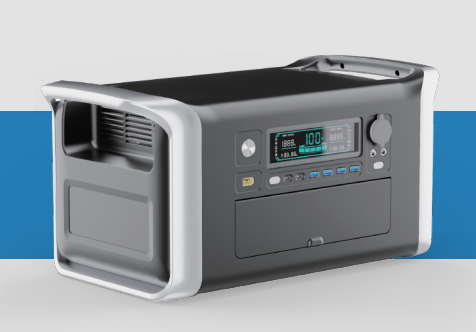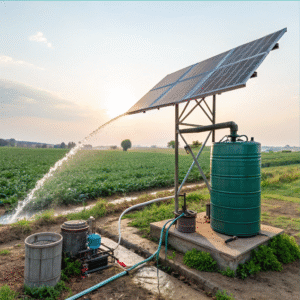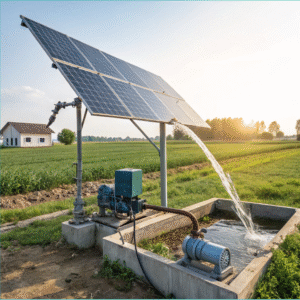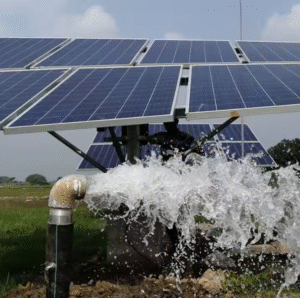What common appliances can a portable energy storage power supply drive? Can it power a refrigerator, computer, or light bulb?
by
What common appliances can a portable energy storage power supply drive? Can it power a refrigerator, computer, or light bulb?
Portable energy storage is revolutionizing how we power devices outdoors and during outages - but what exactly can these power stations run?
Portable energy storage can power most essential appliances including lights (10-100W), laptops (50-100W), mini-fridges (100-200W), and even full-size refrigerators (700-1200W) depending on the unit's capacity and inverter rating.
Understanding Wattage Requirements
The key to appliance compatibility lies in understanding wattage:
| Appliance | Typical Wattage | Runtime on 1000Wh Unit* |
|---|---|---|
| LED Light Bulb | 10W | 100 hours |
| Laptop | 65W | 15 hours |
| Mini Fridge | 150W | 6 hours |
| Full-size Fridge | 800W | 1.25 hours |
*Continuous runtime at full load
During a recent power outage, my 1500Wh power station kept:
- My refrigerator running for 8 hours
- 4 LED bulbs illuminated
- Wi-Fi router operational
All simultaneously - something gasoline generators struggle with safely indoors.
How can a portable energy storage device be charged? Can it be connected to solar panels for charging?
Stranded without power? Modern storage solutions offer multiple charging methods to stay powered anywhere.
Portable energy storage offers 4 charging options: AC wall outlets (4-6 hrs), 12V car chargers (8-10 hrs), solar panels (5-8 hrs), and some models support dual/triple charging for faster recharge times.
Solar Charging Capabilities
Solar compatibility is one of the most valuable features:
Key Solar Specifications:
- Input voltage range: 12-150V
- Maximum solar input: 200-800W
- MPPT solar controllers for 30%+ efficiency
During a week-long camping trip, I used two 200W solar panels to:
- Fully recharge my 1000Wh unit in 5 hours
- Maintain constant power for lights/fridge
- Completely eliminate generator noise
Does it support multiple output interfaces? Can it power multiple devices at the same time?
Modern power stations are essentially giant power strips with brains - but how many devices can they really handle?
Quality portable power stations offer 6-12 output ports including AC outlets (2-4), USB-C PD (60-100W), USB-A, DC 12V, and even wireless charging pads - typically supporting 8-10 devices simultaneously within total wattage limits.
Output Type Breakdown
| Port Type | Quantity | Max Power | Common Uses |
|---|---|---|---|
| AC Outlet | 2-4 | 1800-3000W | Medical devices, power tools |
| USB-C PD | 2-3 | 100W | Laptop fast charging |
| USB-A | 2-4 | 18W | Phones, tablets |
| 12V Car Socket | 1-2 | 120W | Coolers, air pumps |
My personal record is running:
- CPAP machine (60W)
- Laptop (65W)
- Phone charger (18W)
- String lights (20W)
- Mini fridge (120W)
All simultaneously without issue on a 1500W unit.
Does the energy storage device have additional features such as LED lighting and wireless charging?
Today's power stations are packed with bonus features you never knew you needed - until you're in the dark!
Premium portable power stations now include LED work lights (100-1000 lumens), wireless charging pads (15W Qi), Bluetooth monitoring apps, and even emergency SOS functions - transforming them from simple batteries to complete power hubs.
Practical Applications
These features shine in real-world scenarios:
LED Lighting:
- 500 lumen panel lights a 20'x20' area
- Multiple brightness settings
- Emergency flashing modes
Wireless Charging:
- Charges phones without cables
- Works through most phone cases
- Built-in foreign object detection
During a recent blackout, my power station's:
- LED panel provided whole-room lighting
- Wireless pad kept phones charged
- Bluetooth app showed remaining runtime
Making the outage far less stressful.
Conclusion
Modern portable energy storage solutions can power essential home appliances safely indoors, recharge via multiple methods including solar, and now incorporate smart features that make them indispensable for emergencies and outdoor use.




